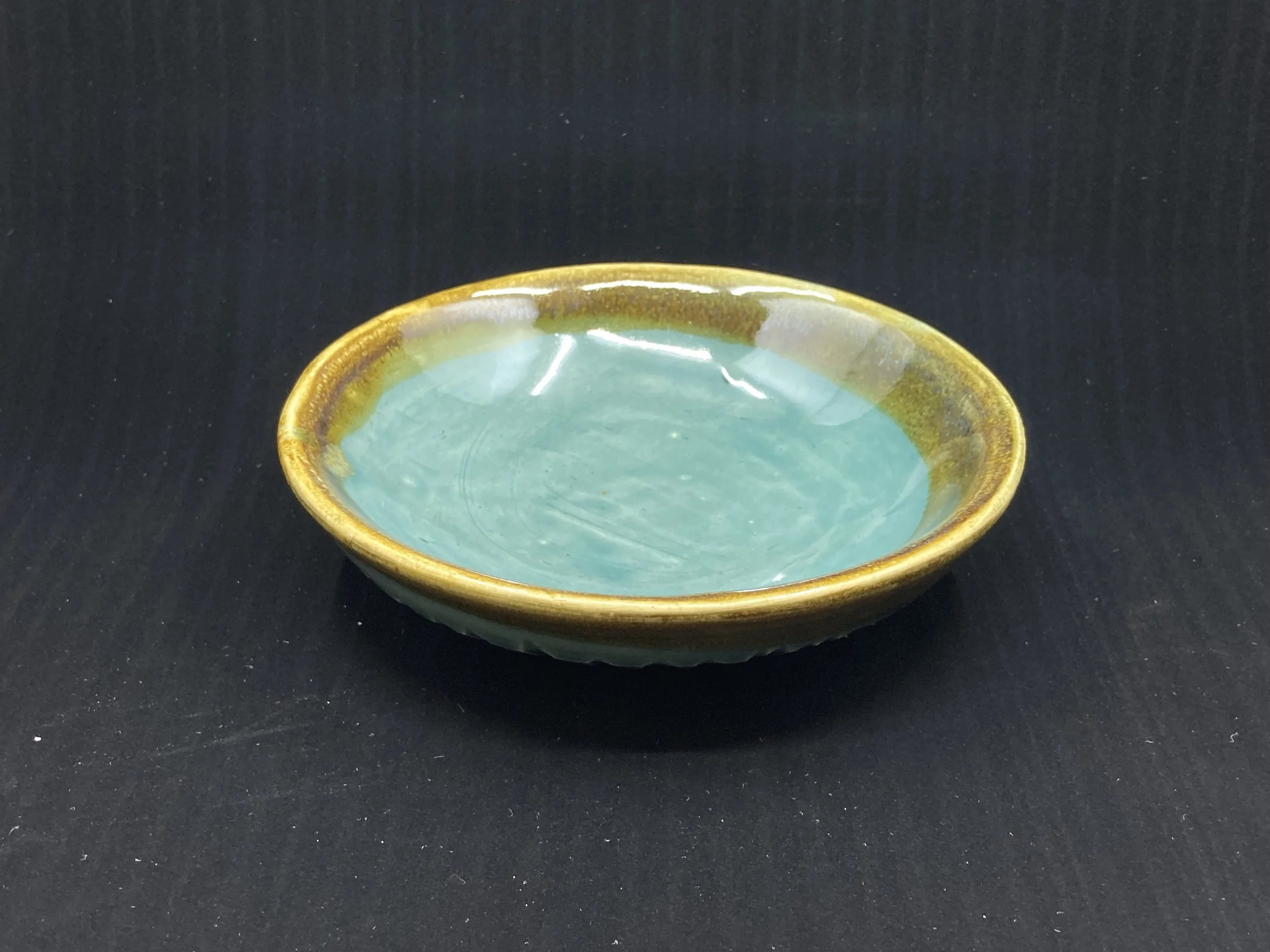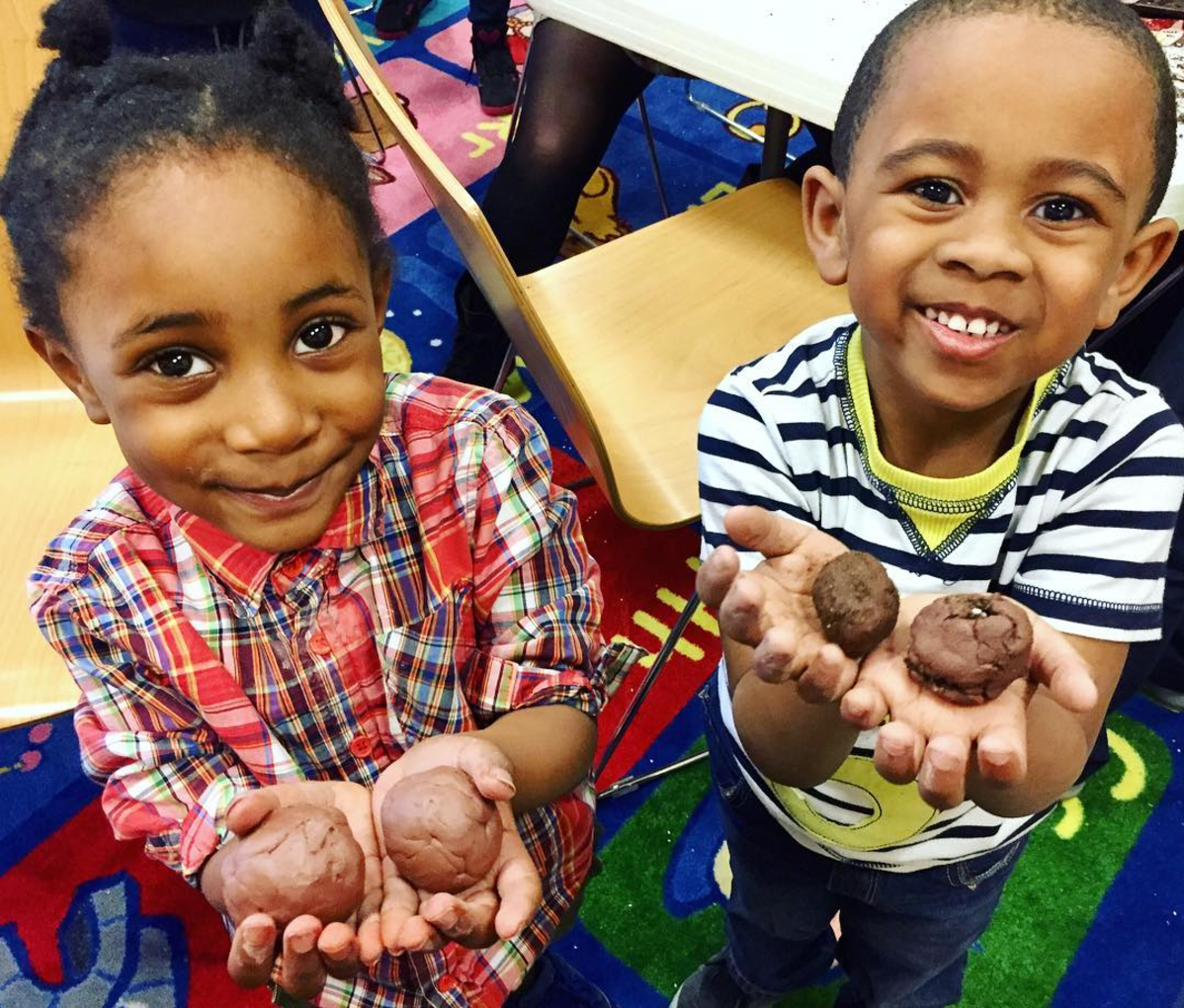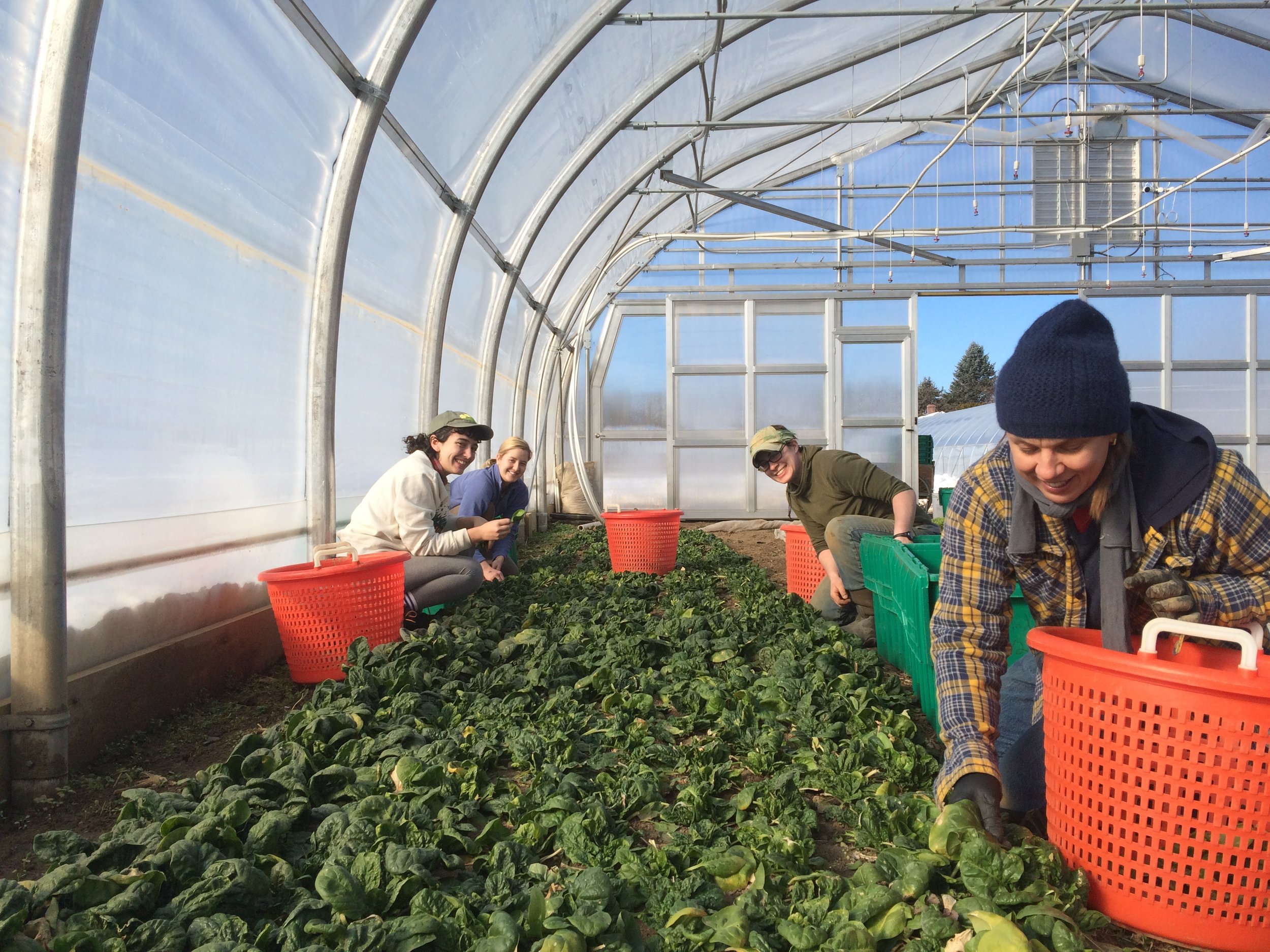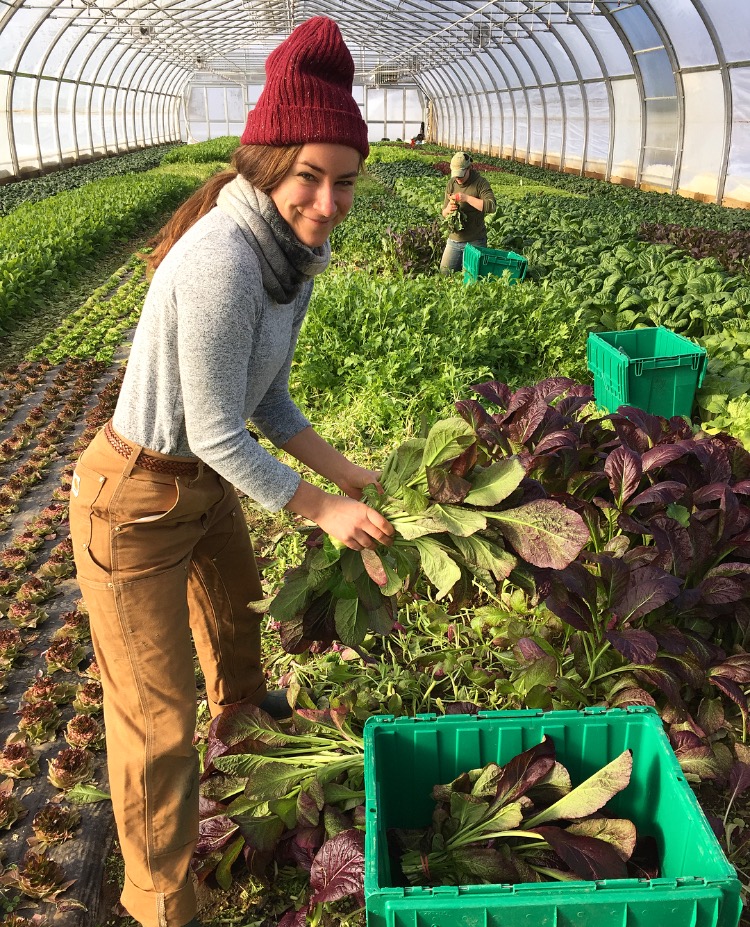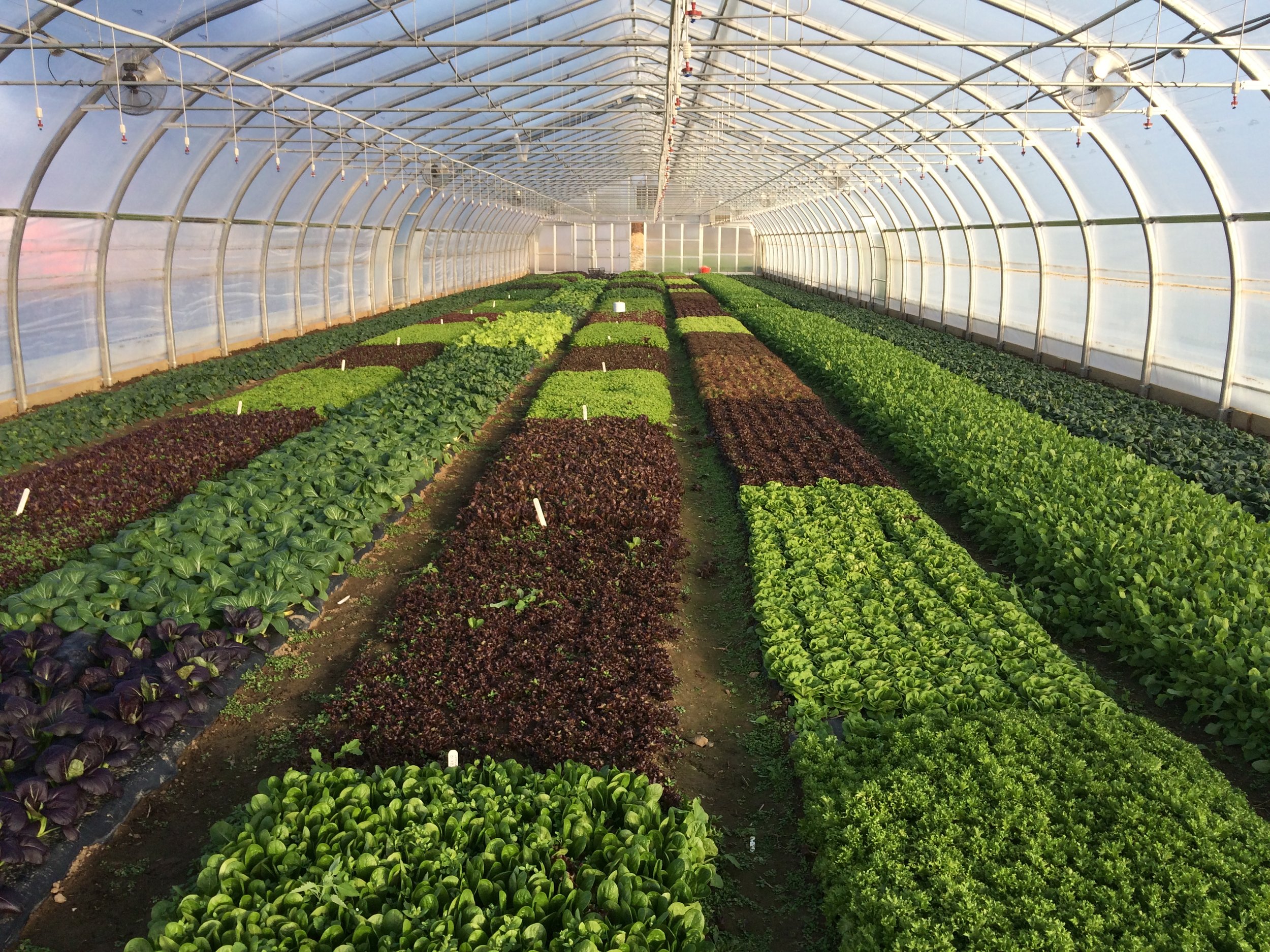Whoa, March. We might be tempted to "pretend it didn't happen," due to the cancellations, unexpected snow removal needs, and general inconvenience precipitating from the big winter storm, but I think it's helpful to be reminded that we're never in complete control. Arriving at PFP the day after the major snowfall, I fell down at least 5 times during a walk that normally takes 2 minutes; it was surprising and hard, and was accompanied by lots of audible (if only to me) laughter. The great news from the farm following this return of winter is that everything has held up wonderfully, and we are still lucky to have some greens in the tunnels, as well as thousands of healthy seedlings growing for CSA, plant sale, and meditation garden.
That's right! It's the busy and exciting season around here when the greenhouse is buzzing with seeding and re-potting activity and becoming utterly packed with plants. Our greenhouse manager, Merle, is beginning her third season at PFP, and continues to develop and implement systems that maximize available space and plant health, which means healthier transplants and even more plant sale awesomeness in May.
Some of the improvements you're likely not aware of include:
- Potting mix that is now supplied from Vermont Compost (very high quality potting mix ensures good water retention and plenty of available nutrients for seedlings)
- A reconstructed end wall of our greenhouse that helps retain heat (a new, wider door also makes seeding considerably more efficient)
- Germination chambers that we constructed last April/May (a substantial increase in germination space, and a more ideal environment, compared to the old fridges we used in previous years)
With these tools available, the farm crew has been sowing seeds and giving careful attention to seedlings, especially the flowers and herbs for the plant sale that are challenging to start from seed, compared to field crops. We plan to offer some new herbs at this year's plant sale, including lemon mint, summer savory, and lovage, which is one of Merle's personal favorites: a perennial, it has an aromatic smell and taste that is quite reminiscent of celery. The leaves, seeds, and root are all useable and have medicinal qualities.
Tomatoes are another focus in the greenhouse this time of year, and we are excited to expand our selection of heirloom tomatoes, both for the plant sale and grown in our high tunnels for CSA. Here are some of the varieties we're anxious to see and try:
- Bull's Heart: a productive Russian heirloom producing sweet, flavorful pink fruits
- Green Berkeley Tie-Dye: featuring green/red/amber stripes, a tangy, tasty, small- to medium-size tomato
- Dr. Wyche's Yellow: large fruits, and supposedly some of the tastiest gold tomatoes available
- Black Cherry: beautiful red-to-black coloration and a rich flavor
- Copia: I grew this heirloom in my garden last season, and loved the sweet, juicy fruits that are streaked with red and gold inside and out
To hear and see a bit more about our spring adventures at the farm, check us out on Facebook and Instagram, where we’ll continue to share photos, videos, and updates from the greenhouse and beyond. And, of course, join us on May 6 and 13 for the 2017 Plant Sale and Open Farm Day! It’s a wonderful chance to see each other again and to celebrate the beginning of the growing season.





